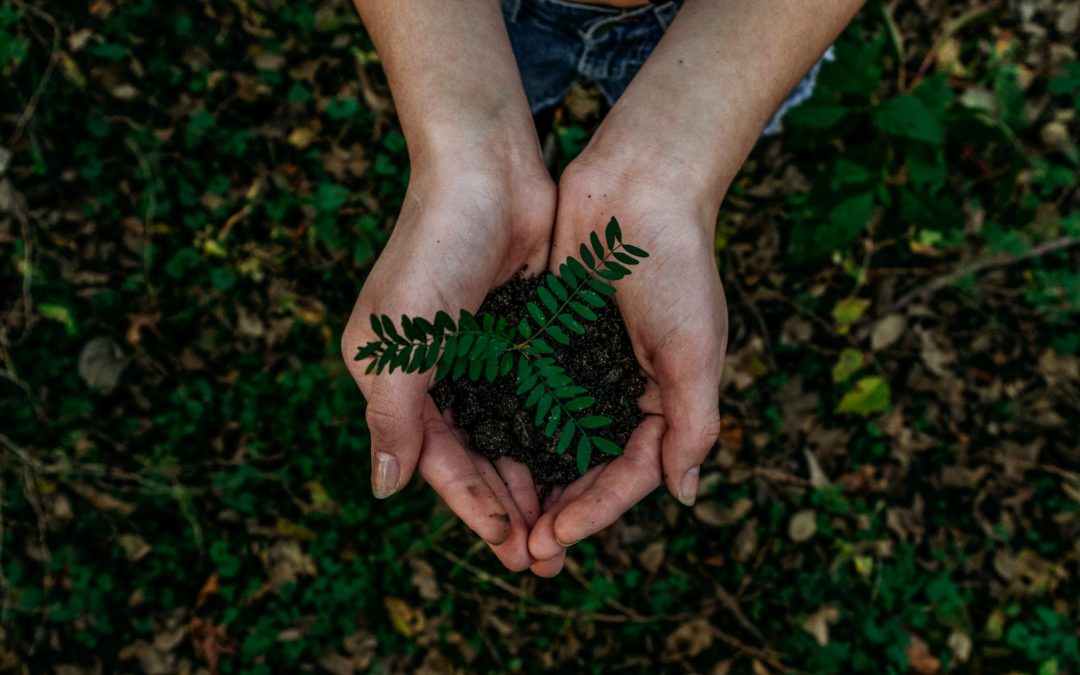In the intricate dance of life on our planet, trees are the virtuoso performers, providing an unparalleled array of ecological services. They serve as vital lungs for Earth, purifying our air through the absorption of pollutants and the release of oxygen. The symbiotic relationships formed beneath their protective canopy support a diverse web of flora and fauna, preserving biodiversity and ensuring that life flourishes.
Beyond merely existing, trees actively shape their surroundings. Their roots stabilize the soil, mitigating erosion and landslides, while also enhancing water quality by preventing pollutants from seeping into the earth. Trees, as a refuge for birds and insects, play a crucial role in pest control, reducing the need for harmful pesticides and fostering a delicate balance within ecosystems.
The Biggest Benefits of Tree Planting
1. Air Quality
Trees can filter air pollutants making them a natural air purifier. They absorb these pollutants in their bark, leaves, and roots. We often create air pollutants such as smoke emissions from vehicle emissions, and industrial, and other human activities. In return, trees provide us with cleaner oxygen to breathe in.
2. Biodiversity Support
Trees also provide habitats for various animals just like birds. In the forest were lain hundreds and thousands of trees are home to various species and these trees contribute to the diversity of the ecosystem and stability. For example, everyone is horrified to see big snakes in the city. These snakes are forced to migrate to another place because their natural habitat is destroyed by humans. It is important to stop deforestation to balance our ecosystem and start planting trees also known as reforestation.
3. Carbon Sequestration
It is the process of capturing and storing carbon dioxide, which is then sequestered in natural reservoirs, such as soils, fossils, and forests. Trees undergo a natural biological process known as “photosynthesis” (“photo” meaning “light” and “synthesis” meaning “to put together”). During photosynthesis, trees actively absorb carbon dioxide from the air, converting it into CO2 molecules, and subsequently transforming them into organic compounds, such as sugars and cellulose. After this process, carbon is stored within the tree’s trunk, branches, roots, and leaves.
4. Soil Conservation
The roots of trees help hold the soil and stop soil erosion. The roots also help maintain the health of the soil by binding soil particles together. With trees, we can prevent further damage from natural calamities, especially landslides or mudslides.
5. Water Regulation
Trees absorb water in their roots and transport it in their leaves (which is known as transpiration). This may reduce the risk of flood and drought. It also cools down the environment upon the release of moisture in the air.
6. Flood Control
Trees are helpful barriers, especially near riverbanks and coastline. They act as natural barriers that control flooding and storm surges. It is beneficial if we plant trees right now for the future.
7. Urban Heat Mitigation
Trees provide natural shade and cool down the temperature in urban areas. This will counter the “urban heat island” effect that is the main reason for higher temperatures in cities.
8. Renewable Resources
Trees provide us people valuable resources. This includes fruits and nuts to eat. Timber for building a house, ship, and other structures built from trees and timber just like furniture. It is a helping hand for us to strive especially in our livelihoods and industries.
9. Aesthetic and Recreational value
Planting trees enhances the natural beauty of landscapes. Including are the park, and other urban recreational areas. With this beauty around, trees help us to relax, meditate, and have social interaction.
10. Human Health Benefits
As mentioned in number 9, spending time in green spaces and most especially in trees is best for reducing stress, improving overall physical health, and enhancing mental wellbeing. Spending time under a tree pursuing your hobby can help if you’re overwhelmed.
11. Noise Reduction
Trees are a natural barrier to noise. This can absorb and block out unwanted sounds. So, if you are someone who wants peace and serenity, planting trees around your place is a better idea.
12. Energy Conservation
Planting trees will help energy consumption. When planted strategically around buildings and houses, it can reduce the need for cooling down the area. This will greatly save energy. Why spend dollars on a cooling machine if you can plant trees around for free?
13. Property value
Do you ever wonder why a property is significantly more expensive when surrounded by lush greenery? Properties with trees planted around them tend to have higher values due to their aesthetics and improved quality of life.
14. Wind Barrier
Planting trees around areas with crops, livestock, and buildings helps protect them from strong winds in times of extreme weather conditions.
15. Urban Regeneration
Urban tree planting makes neighborhoods more attractive and livable.
16. Rainwater Filtration
Trees help filter rainwater and remove pollutants before rainwater reaches the ground and serve as underground aquifers and water bodies that are essential for human living.
17. Job Creation
Planting trees and maintenance gives employment opportunities in different sectors.
18. Economic benefits
When planting trees, can boost the economic benefits in the future through the production of timber industries or furniture livelihoods.
19. Long-Term Investment
Planting trees serves as a long-term investment because, in the future, their benefits and value continue to grow over time.
20. Educational opportunity
Planting trees has educational opportunities such as the study of nature and ecology. The scientific study of trees is called dendrology.
21. Shade for Livestock
Planting trees offers shelter and shade for livestock animals, for example on farms. The shade from trees can be also very helpful for people, especially for tourists who visit warm-weather countries.
22. Habitat for Endangered Species
Planting trees helps restore the natural habitat for some endangered animals. Trees can also serve as natural pathways for wildlife, allowing them to move between different habitats and find food and shelter. This helps maintain genetic diversity and supports the overall health of ecosystems.
23. Nature-Based Attraction
Tree-filled attractions attract tourists and nature enthusiasts. Examples of these popular tree parks are Sequoia and Kings Canyon National Park in California and Everglades National Park in Florida to name a few.
24. Scientific Research
Planting trees provides opportunities to study them in the future for ecological and botanical studies.
25. Water Quality Improvement
Trees help filter and purify water by trapping sediment and removing contaminants. They can be planted along water bodies to improve water quality, benefiting aquatic ecosystems and human communities.
26. Land Sustainability
Agroforestry and crops are combined to enhance sustainability.
27. Timeless Legacy
Planting trees ensures a long-lasting impact on the future. For example, you have a centennial tree in your background that was planted by your ancestor a long time ago. You sense a strong connection among them and truly appreciate the timeless legacy they will pass on to you in the future. “People come and go; everything has changed but a tree is a constant witness in these ever-changing events.”
28. Ethical Responsibility
Planting trees is a responsibility for everyone to contribute to the well-being of current and future generations, fostering a sense of environmental ethics.
29. Medicine
Many trees have medicinal uses that contribute to traditional and modern medicine. For example, ginkgo, willow, maple, acacia, oak, and many more serve as medicinal trees. Here are some examples of medicinal trees and their treatment:
- Ginkgo biloba – Ginkgo may treat dementia, Alzheimer’s, anxiety, glaucoma, PMS, and memory, according to lab studies.
- Maple tree – People used red maple bark as an analgesic, wash for eyes and cataracts, and remedy for muscular aches.
- Acacia – This tree can relieve pain and irritation, wound healing, oral health, and heal coughs and colds to name a few.
30. Cultural Significance
Some benefits of planting trees is it hold cultural and spiritual value in several countries and serve as symbols and landmarks. To understand further, we discuss them one by one:
- Trees have symbolic representation often derived from the tree’s characteristics such as their longevity, growth, strength, wisdom, and connection to the Divine.
- Some indigenous cultural beliefs consider certain trees as sacred and central to religious ceremonies. Some believe that trees are inhabited by spirits or deities. Some may offer prayer and rituals around these trees.
- Some people believe in the “Tree of Life and Creation Myths,” which represents the interconnectedness of all living beings, the life cycle including death, and cosmic order.
- Trees are used in art, literature, and poetry across the globe. Trees are often used as metaphors and symbolism in poetry and the creation of artifacts and woodworking.
Read Also: Top 30 Outdoor Learning Examples
Trees and Social Cohesion
Within our communities, trees serve as unifying elements that connect people to their environment, as well as to one another. Their presence in urban landscapes and rural settings alike has a profound impact on our social well-being. As individuals and families take solace in the shade of a tree or gather under its branches for picnics and celebrations, an unspoken sense of belonging is cultivated.
The nurturing act of planting trees transcends generations. Families and communities engage in tree planting, creating lasting legacies for future inhabitants. These green spaces become the backdrop for childhood memories, a sanctuary for reflection, and a symbol of growth and renewal. Trees, in this context, serve as bridges between past, present, and future, uniting society in a shared commitment to the environment.
Economic Prosperity
Trees are not only ecological and social pillars but also engines of economic growth. The timber industry, rooted in sustainable practices, provides livelihoods and economic stability for countless communities. Simultaneously, the non-timber forest products, such as fruits, nuts, and medicinal plants, offer economic opportunities that respect the integrity of ecosystems.
Furthermore, the presence of trees enhances property values by creating attractive, serene landscapes. This, in turn, stimulates economic prosperity for homeowners and local governments alike. Trees also significantly contribute to energy conservation, with their shade reducing the need for air conditioning and heating, leading to lower utility bills for residents and businesses.
The Most Popular on BitGlint

20 Overthinking Examples & Definition
Overthinking is something we all experience, but it becomes a problem when it starts to control our thoughts and...

Fairness: 20 Real Life Examples & Definition
Fairness is something we all recognize, whether as children on the playground or as adults at work. It’s about...

25 Examples of Soft Power in International Relations
Countries today use more than just military or economic force to shape the global landscape. They increasingly rely on...

20 Patience Examples You Can Use Daily
Life moves quickly, and we’re often used to getting things right away. But learning how to wait and manage our...

Top 100 Essential Travel Items
Planning your next trip and not sure what to pack? Don’t worry, we’ve got you covered! Whether you’re a frequent...

Culture of Silence: 20 Examples & Definition
In many communities and organizations, the "culture of silence" is a powerful...

20 Key Concepts in International Relations
International relations (IR) is a broad discipline that explores how countries and other global actors interact. From...
Get Inspired with BitGlint

